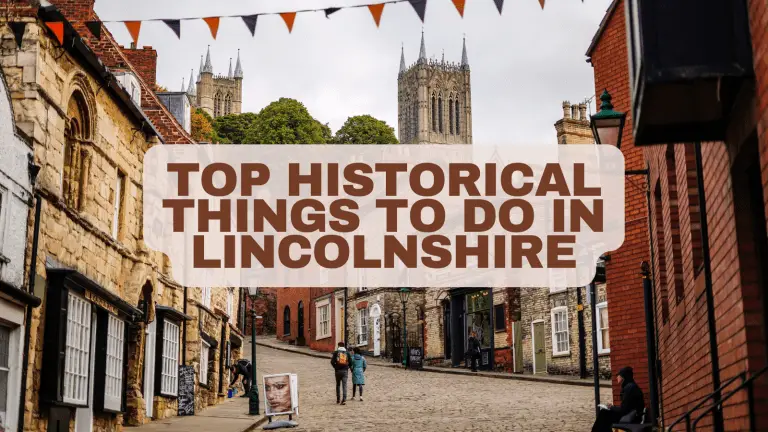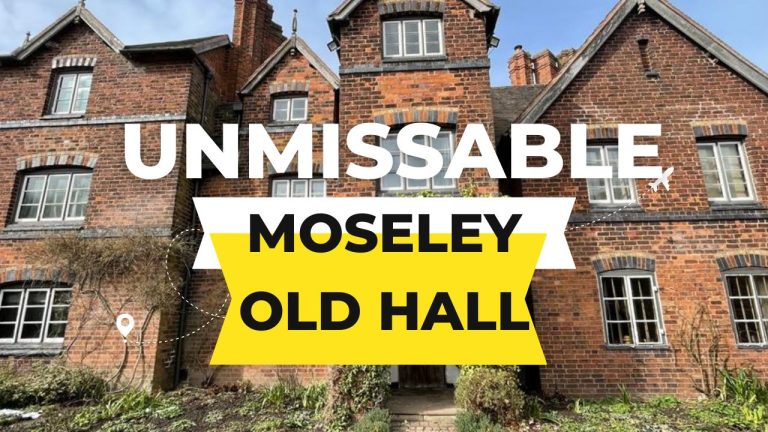Top 21 Historical Things To Do On The Isle of Wight in 2023
The Isle of Wight Is both a county of England and the country’s largest and second-most populous island. As a child who would grow to be Queen, Victoria holidayed on the isle and loved it so much that she went on to have a winter home here. As a holiday resort, it attracted the likes of Alfred, Lord Tennyson, Julia Margaret Cameron, Charles Dickens, and various esteemed members of European royalty.
What is it that makes the island so unique?
[/et_pb_text][/et_pb_column][/et_pb_row][et_pb_row _builder_version=”4.15.0″ _module_preset=”default” global_colors_info=”{}”][et_pb_column type=”4_4″ _builder_version=”4.15.0″ _module_preset=”default” global_colors_info=”{}”][et_pb_text _builder_version=”4.15.0″ _module_preset=”default” global_colors_info=”{}”]Osborne House
[/et_pb_text][/et_pb_column][/et_pb_row][et_pb_row column_structure=”1_5,3_5,1_5″ _builder_version=”4.15.0″ _module_preset=”default” global_colors_info=”{}”][et_pb_column type=”1_5″ _builder_version=”4.15.0″ _module_preset=”default” global_colors_info=”{}”][/et_pb_column][et_pb_column type=”3_5″ _builder_version=”4.15.0″ _module_preset=”default” global_colors_info=”{}”][et_pb_image src=”http://historywithhenry.com/wp-content/uploads/2022/05/robert-anderson-WqPhrNbD8JY-unsplash-scaled.jpg” alt=”Things To Do On The Isle of Wight” title_text=”robert-anderson-WqPhrNbD8JY-unsplash” align=”center” _builder_version=”4.15.0″ _module_preset=”default” global_colors_info=”{}”][/et_pb_image][/et_pb_column][et_pb_column type=”1_5″ _builder_version=”4.15.0″ _module_preset=”default” global_colors_info=”{}”][/et_pb_column][/et_pb_row][et_pb_row _builder_version=”4.15.0″ _module_preset=”default” global_colors_info=”{}”][et_pb_column type=”4_4″ _builder_version=”4.15.0″ _module_preset=”default” global_colors_info=”{}”][et_pb_text _builder_version=”4.15.0″ _module_preset=”default” global_colors_info=”{}”]Visit Queen Victoria’s palatial holiday home on the Isle of Wight and get an intimate look at life inside its walls. See Victoria and Albert’s private apartments, their bathing beach, and the royal children’s Swiss Cottage. It is well known that Prince Albert was reminded of the Bay of Naples when taking in the view across the Solent from the gardens.
The Queen entertained foreign royalty and visiting ministers right here and it is also where she sought solace when she lost her beloved husband in 1861. Today, many of the rooms are still filled with original furniture and works of art, while the planting on the grounds is to Albert’s designs.
Pop into the delightful restaurant and café after a day of exploring the house, its Victorian Walled Garden, and extensive grounds.
[/et_pb_text][/et_pb_column][/et_pb_row][et_pb_row column_structure=”1_2,1_2″ _builder_version=”4.15.0″ _module_preset=”default” global_colors_info=”{}”][et_pb_column type=”1_2″ _builder_version=”4.15.0″ _module_preset=”default” global_colors_info=”{}”][et_pb_toggle title=”Amenities” _builder_version=”4.15.0″ _module_preset=”default” global_colors_info=”{}”]Toilets: Yes
Car Park: Yes
Walking: Yes
Dog Friendly: Yes (Grounds Only)
Kids Playground: Yes
Cafe / Restaurant: Yes
[/et_pb_toggle][/et_pb_column][et_pb_column type=”1_2″ _builder_version=”4.15.0″ _module_preset=”default” global_colors_info=”{}”][et_pb_cta title=”Prices” button_url=”https://www.english-heritage.org.uk/visit/places/osborne/prices-and-opening-times/” url_new_window=”on” button_text=”Click here for more details” _builder_version=”4.15.0″ _module_preset=”default” background_color=”#ffd580″ hover_enabled=”0″ global_colors_info=”{}” sticky_enabled=”0″]Member: Free
Adult: £19.00
Child (5-17 years): £11.40
Concession tool-tip: £17.10
Family (2 adults, up to 3 children): £49.40
Family (1 adult, up to 3 children): £30.40
[/et_pb_cta][/et_pb_column][/et_pb_row][et_pb_row _builder_version=”4.15.0″ _module_preset=”default” global_colors_info=”{}”][et_pb_column type=”4_4″ _builder_version=”4.15.0″ _module_preset=”default” global_colors_info=”{}”][et_pb_text _builder_version=”4.15.0″ _module_preset=”default” global_colors_info=”{}”]St Boniface Old Church
[/et_pb_text][/et_pb_column][/et_pb_row][et_pb_row _builder_version=”4.15.0″ _module_preset=”default” global_colors_info=”{}”][et_pb_column type=”4_4″ _builder_version=”4.15.0″ _module_preset=”default” global_colors_info=”{}”][et_pb_text _builder_version=”4.15.0″ _module_preset=”default” global_colors_info=”{}”]This tiny building with a nave and chancel of Norman origin is among very few medieval churches in England dedicated to the Saxon monk, St Boniface, who died in 755. Visitors can enjoy aspects of the church from throughout history. The chancel is 13th century, it bears windows from the late medieval period and Tudor, while the studded south door dates back to the 1600s as does the Flemish wooden cross behind the altar. The nave boasts what is left of the only remaining works of Romanesque painting on the Island, some dating to the early 12th century.
[/et_pb_text][/et_pb_column][/et_pb_row][et_pb_row column_structure=”1_2,1_2″ _builder_version=”4.15.0″ _module_preset=”default” global_colors_info=”{}”][et_pb_column type=”1_2″ _builder_version=”4.15.0″ _module_preset=”default” global_colors_info=”{}”][et_pb_cta title=”Open” button_url=”https://www.visitisleofwight.co.uk/things-to-do/st-boniface-old-church-p1069521″ url_new_window=”on” button_text=”Click here for more details” _builder_version=”4.15.0″ _module_preset=”default” background_color=”#ffd580″ hover_enabled=”0″ global_colors_info=”{}” sticky_enabled=”0″]* Please note that Island churches may occasionally be closed or in use for services. Many are dependent on volunteers to stay open during the day.
[/et_pb_cta][/et_pb_column][et_pb_column type=”1_2″ _builder_version=”4.15.0″ _module_preset=”default” global_colors_info=”{}”][et_pb_toggle title=”Amenities” _builder_version=”4.15.0″ _module_preset=”default” global_colors_info=”{}”]
Toilets: No
Car Park: No
Walking: No
Dog Friendly: No
Kids Playground: No
Cafe / Restaurant: No
[/et_pb_toggle][/et_pb_column][/et_pb_row][et_pb_row _builder_version=”4.15.0″ _module_preset=”default” global_colors_info=”{}”][et_pb_column type=”4_4″ _builder_version=”4.15.0″ _module_preset=”default” global_colors_info=”{}”][et_pb_text _builder_version=”4.15.0″ _module_preset=”default” global_colors_info=”{}”]St. Agnes Church
[/et_pb_text][/et_pb_column][/et_pb_row][et_pb_row _builder_version=”4.15.0″ _module_preset=”default” global_colors_info=”{}”][et_pb_column type=”4_4″ _builder_version=”4.15.0″ _module_preset=”default” global_colors_info=”{}”][et_pb_text _builder_version=”4.15.0″ _module_preset=”default” global_colors_info=”{}”]Lord Tennyson’s son, Hallam Tennyson, donated this land in Freshwater Bay for the church which was duly built and consecrated on 12 August 1908. The name was suggested by Hallam’s wife Audrey and it’s the only thatched church on the island.
Although the building was constructed in Edwardian times, the use of stone in its construction taken from an old farmhouse gives an impression of the 17th century. The church gives pride of place to its three-arched wooden screen, carved in detail with vines and foliage. The panels of the choir stalls are carved in geometric patterns.
[/et_pb_text][/et_pb_column][/et_pb_row][et_pb_row column_structure=”1_2,1_2″ _builder_version=”4.15.0″ _module_preset=”default” global_colors_info=”{}”][et_pb_column type=”1_2″ _builder_version=”4.15.0″ _module_preset=”default” global_colors_info=”{}”][et_pb_toggle title=”Amenities” _builder_version=”4.15.0″ _module_preset=”default” global_colors_info=”{}”]Toilets: Yes
Car Park: Yes
Walking: No
Dog Friendly: No
Kids Playground: No
Cafe / Restaurant: Yes
[/et_pb_toggle][/et_pb_column][et_pb_column type=”1_2″ _builder_version=”4.15.0″ _module_preset=”default” global_colors_info=”{}”][et_pb_cta title=”Open” button_url=”https://www.achurchnearyou.com/church/16813/” url_new_window=”on” button_text=”Click here for more details” _builder_version=”4.15.0″ _module_preset=”default” background_color=”#ffd580″ hover_enabled=”0″ global_colors_info=”{}” sticky_enabled=”0″][/et_pb_cta][/et_pb_column][/et_pb_row][et_pb_row _builder_version=”4.15.0″ _module_preset=”default” global_colors_info=”{}”][et_pb_column type=”4_4″ _builder_version=”4.15.0″ _module_preset=”default” global_colors_info=”{}”][et_pb_text _builder_version=”4.15.0″ _module_preset=”default” global_colors_info=”{}”]Quarr Abbey
[/et_pb_text][/et_pb_column][/et_pb_row][et_pb_row _builder_version=”4.15.0″ _module_preset=”default” global_colors_info=”{}”][et_pb_column type=”4_4″ _builder_version=”4.15.0″ _module_preset=”default” global_colors_info=”{}”][et_pb_text _builder_version=”4.15.0″ _module_preset=”default” global_colors_info=”{}”]This ancient abbey was founded in 1132 by Baldwin de Redvers who brought monks to the island from Savigny Abbey in Normandy, France. He went on to become Lord of the Island and Earl of Devon.
[/et_pb_text][/et_pb_column][/et_pb_row][et_pb_row column_structure=”1_2,1_2″ _builder_version=”4.15.0″ _module_preset=”default” global_colors_info=”{}”][et_pb_column type=”1_2″ _builder_version=”4.15.0″ _module_preset=”default” global_colors_info=”{}”][et_pb_cta title=”Closed” button_url=”https://quarrabbey.org/visit/visitor-centre/guided-tours/” url_new_window=”on” button_text=”Click here for more details” _builder_version=”4.15.0″ _module_preset=”default” background_color=”#ffd580″ hover_enabled=”0″ global_colors_info=”{}” sticky_enabled=”0″]Toilets: Yes
Car Park: Yes
Walking: Yes
Dog Friendly: Yes
Kids Playground: No
Cafe / Restaurant: Yes
[/et_pb_toggle][/et_pb_column][/et_pb_row][et_pb_row _builder_version=”4.15.0″ _module_preset=”default” global_colors_info=”{}”][et_pb_column type=”4_4″ _builder_version=”4.15.0″ _module_preset=”default” global_colors_info=”{}”][et_pb_text _builder_version=”4.15.0″ _module_preset=”default” global_colors_info=”{}”]St Mildred’s Church
[/et_pb_text][/et_pb_column][/et_pb_row][et_pb_row _builder_version=”4.15.0″ _module_preset=”default” global_colors_info=”{}”][et_pb_column type=”4_4″ _builder_version=”4.15.0″ _module_preset=”default” global_colors_info=”{}”][et_pb_text _builder_version=”4.15.0″ _module_preset=”default” global_colors_info=”{}”]St Mildred’s Church is ensconced in the village of Whippingham. As the parish church, it is connected to Queen Victoria because the village was once central to the royal estate supporting Osborne House and Barton Manor.
The church was built on the site of the lost medieval parish church back in 1804, only to be torn down and rebuilt between 1854 and 1860. Prince Albert actively participated in its design and it is rumoured that he was instrumental in designing the chancel.
[/et_pb_text][/et_pb_column][/et_pb_row][et_pb_row column_structure=”1_2,1_2″ _builder_version=”4.15.0″ _module_preset=”default” global_colors_info=”{}”][et_pb_column type=”1_2″ _builder_version=”4.15.0″ _module_preset=”default” global_colors_info=”{}”][et_pb_toggle title=”Amenities” _builder_version=”4.15.0″ _module_preset=”default” global_colors_info=”{}”]Toilets: Yes
Car Park: Yes
Walking: No
Dog Friendly: No
Kids Playground: No
Cafe / Restaurant: Yes
[/et_pb_toggle][/et_pb_column][et_pb_column type=”1_2″ _builder_version=”4.15.0″ _module_preset=”default” global_colors_info=”{}”][et_pb_cta title=”Open” button_url=”https://stmildredschurch.org.uk/” url_new_window=”on” button_text=”Click here for more details” _builder_version=”4.15.0″ _module_preset=”default” background_color=”#ffd580″ hover_enabled=”0″ global_colors_info=”{}” sticky_enabled=”0″][/et_pb_cta][/et_pb_column][/et_pb_row][et_pb_row _builder_version=”4.15.0″ _module_preset=”default” global_colors_info=”{}”][et_pb_column type=”4_4″ _builder_version=”4.15.0″ _module_preset=”default” global_colors_info=”{}”][et_pb_text _builder_version=”4.15.0″ _module_preset=”default” global_colors_info=”{}”]Needles Old Battery
[/et_pb_text][/et_pb_column][/et_pb_row][et_pb_row _builder_version=”4.15.0″ _module_preset=”default” global_colors_info=”{}”][et_pb_column type=”4_4″ _builder_version=”4.15.0″ _module_preset=”default” global_colors_info=”{}”][et_pb_text _builder_version=”4.15.0″ _module_preset=”default” global_colors_info=”{}”]These two military batteries guard the West end of the Solent from their position above the Needles stacks, where they were situated to defend against enemy ships.
Built between 1861 and 1863, it originally had six 7-inch Armstrong rifled breechloading guns which were replaced in 1872 with four 7-inch and two 9-inch rifled muzzleloaders. In 1893, six 9-inch rifled muzzle loaders took their place. They required a team of 9 men to load and fire them and fired projectiles weighing 256 pounds (116 kg). These guns were thrown off the side of the cliff in 1903 but two were salvaged and these now stand at the Old Battery. A tunnel leads to a searchlight emplacement with good views in the direction of the Needles lighthouse.
[/et_pb_text][/et_pb_column][/et_pb_row][et_pb_row column_structure=”1_2,1_2″ _builder_version=”4.15.0″ _module_preset=”default” global_colors_info=”{}”][et_pb_column type=”1_2″ _builder_version=”4.15.0″ _module_preset=”default” global_colors_info=”{}”][et_pb_cta title=”Prices” button_url=”https://www.nationaltrust.org.uk/the-needles-old-battery-and-new-battery#Prices” url_new_window=”on” button_text=”Click here for more details” _builder_version=”4.15.0″ _module_preset=”default” background_color=”#ffd580″ hover_enabled=”0″ global_colors_info=”{}” sticky_enabled=”0″]Adult: £7.50
Child: £3.75
Family: £18.75
Group Adult: £6.75
Group Child: £3.40
[/et_pb_cta][/et_pb_column][et_pb_column type=”1_2″ _builder_version=”4.15.0″ _module_preset=”default” global_colors_info=”{}”][et_pb_toggle title=”Amenities” _builder_version=”4.15.0″ _module_preset=”default” global_colors_info=”{}”]Toilets: Yes
Car Park: No
Walking: Yes
Dog Friendly: Yes
Kids Playground: Yes
Cafe / Restaurant: Yes
[/et_pb_toggle][/et_pb_column][/et_pb_row][et_pb_row _builder_version=”4.15.0″ _module_preset=”default” global_colors_info=”{}”][et_pb_column type=”4_4″ _builder_version=”4.15.0″ _module_preset=”default” global_colors_info=”{}”][et_pb_text _builder_version=”4.15.0″ _module_preset=”default” global_colors_info=”{}”]St Catherine’s Lighthouse
[/et_pb_text][/et_pb_column][/et_pb_row][et_pb_row _builder_version=”4.15.0″ _module_preset=”default” global_colors_info=”{}”][et_pb_column type=”4_4″ _builder_version=”4.15.0″ _module_preset=”default” global_colors_info=”{}”][et_pb_text _builder_version=”4.15.0″ _module_preset=”default” global_colors_info=”{}”]Right on the southernmost tip of the Isle of Wight stands this Victorian lighthouse on St Catherine’s Point. The Clarendon was shipwrecked on October 11, 1836, taking 23 souls down with her. This led to the completion of the lighthouse in 1840 to guide shipping in the area.
[/et_pb_text][/et_pb_column][/et_pb_row][et_pb_row column_structure=”1_2,1_2″ _builder_version=”4.15.0″ _module_preset=”default” global_colors_info=”{}”][et_pb_column type=”1_2″ _builder_version=”4.15.0″ _module_preset=”default” global_colors_info=”{}”][et_pb_toggle title=”Amenities” _builder_version=”4.15.0″ _module_preset=”default” global_colors_info=”{}”]Toilets: No
Car Park: Yes
Walking: Yes
Dog Friendly: Yes
Kids Playground: Yes
Cafe / Restaurant: No
[/et_pb_toggle][/et_pb_column][et_pb_column type=”1_2″ _builder_version=”4.15.0″ _module_preset=”default” global_colors_info=”{}”][et_pb_cta title=”Open” button_url=”https://www.trinityhouse.co.uk/lighthouses-and-lightvessels/st-catherines-lighthouse” url_new_window=”on” button_text=”Click here for more details” _builder_version=”4.15.0″ _module_preset=”default” background_color=”#ffd580″ hover_enabled=”0″ global_colors_info=”{}” sticky_enabled=”0″][/et_pb_cta][/et_pb_column][/et_pb_row][et_pb_row _builder_version=”4.15.0″ _module_preset=”default” global_colors_info=”{}”][et_pb_column type=”4_4″ _builder_version=”4.15.0″ _module_preset=”default” global_colors_info=”{}”][et_pb_text _builder_version=”4.15.0″ _module_preset=”default” global_colors_info=”{}”]Carisbrooke Castle
[/et_pb_text][/et_pb_column][/et_pb_row][et_pb_row _builder_version=”4.15.0″ _module_preset=”default” global_colors_info=”{}”][et_pb_column type=”4_4″ _builder_version=”4.15.0″ _module_preset=”default” global_colors_info=”{}”][et_pb_text _builder_version=”4.15.0″ _module_preset=”default” global_colors_info=”{}”]Carisbrooke has spent a thousand years or more in service defending the Isle of Wight as a Saxon fortress and a castle of the Norman conquest. Charles I was imprisoned within its walls during the Civil War leading up to his execution. Now the castle is the residence of the island’s governor.
[/et_pb_text][/et_pb_column][/et_pb_row][et_pb_row column_structure=”1_2,1_2″ _builder_version=”4.15.0″ _module_preset=”default” global_colors_info=”{}”][et_pb_column type=”1_2″ _builder_version=”4.15.0″ _module_preset=”default” global_colors_info=”{}”][et_pb_cta title=”Prices” button_url=”https://englishheritage.seetickets.com/event/carisbrooke-castle-day-ticket/carisbrooke-castle-fields/2217896#op2″ url_new_window=”on” button_text=”Click here for more details” _builder_version=”4.15.0″ _module_preset=”default” background_color=”#ffd580″ hover_enabled=”0″ global_colors_info=”{}” sticky_enabled=”0″]Adult: £12.80
Concession: £11.50
Child: £7.60
Family (2 adult + 3 child): £33.20
Family (1 adult + 3 child): £20.40
Add on child: £0.00
Under 5 y/o: £0.00
[/et_pb_cta][/et_pb_column][et_pb_column type=”1_2″ _builder_version=”4.15.0″ _module_preset=”default” global_colors_info=”{}”][et_pb_toggle title=”Amenities” _builder_version=”4.15.0″ _module_preset=”default” global_colors_info=”{}”]Toilets: Yes
Car Park: Yes
Walking: Yes
Dog Friendly: Yes
Kids Playground: Yes
Cafe / Restaurant: Yes
[/et_pb_toggle][/et_pb_column][/et_pb_row][et_pb_row _builder_version=”4.15.0″ _module_preset=”default” global_colors_info=”{}”][et_pb_column type=”4_4″ _builder_version=”4.15.0″ _module_preset=”default” global_colors_info=”{}”][et_pb_text _builder_version=”4.15.0″ _module_preset=”default” global_colors_info=”{}”]Yarmouth Castle
[/et_pb_text][/et_pb_column][/et_pb_row][et_pb_row _builder_version=”4.15.0″ _module_preset=”default” global_colors_info=”{}”][et_pb_column type=”4_4″ _builder_version=”4.15.0″ _module_preset=”default” global_colors_info=”{}”][et_pb_text _builder_version=”4.15.0″ _module_preset=”default” global_colors_info=”{}”]Henry VIII had the castle built to guard the entry to Yarmouth’s port from the Solent. Completed in 1547, it is the last of Henry’s ambitious system of coastal defences. It was also the first to adopt the new ‘arrowhead’ artillery bastion style.
[/et_pb_text][/et_pb_column][/et_pb_row][et_pb_row column_structure=”1_2,1_2″ _builder_version=”4.15.0″ _module_preset=”default” global_colors_info=”{}”][et_pb_column type=”1_2″ _builder_version=”4.15.0″ _module_preset=”default” global_colors_info=”{}”][et_pb_toggle title=”Amenities” _builder_version=”4.15.0″ _module_preset=”default” global_colors_info=”{}”]Toilets: No
Car Park: Yes
Walking: No
Dog Friendly: Yes
Kids Playground: Yes
Cafe / Restaurant: Yes
[/et_pb_toggle][/et_pb_column][et_pb_column type=”1_2″ _builder_version=”4.15.0″ _module_preset=”default” global_colors_info=”{}”][et_pb_cta title=”Prices” button_url=”https://englishheritage.seetickets.com/event/yarmouth-castle-day-ticket/yarmouth-castle/2248722#op2″ url_new_window=”on” button_text=”Click here for more details” _builder_version=”4.15.0″ _module_preset=”default” background_color=”#ffd580″ hover_enabled=”0″ global_colors_info=”{}” sticky_enabled=”0″]Adult: £6.60
Concession: £5.90
Child: £4.00
Family (2 adult + 3 child): £17.20
Family (1 adult + 3 child): £10.60
Add on child: £0.00
Under 5 y/o: £0.00
[/et_pb_cta][/et_pb_column][/et_pb_row][et_pb_row _builder_version=”4.15.0″ _module_preset=”default” global_colors_info=”{}”][et_pb_column type=”4_4″ _builder_version=”4.15.0″ _module_preset=”default” global_colors_info=”{}”][et_pb_text _builder_version=”4.15.0″ _module_preset=”default” global_colors_info=”{}”]Appuldurcombe House
[/et_pb_text][/et_pb_column][/et_pb_row][et_pb_row _builder_version=”4.15.0″ _module_preset=”default” custom_margin=”|auto|3px|auto||” global_colors_info=”{}”][et_pb_column type=”4_4″ _builder_version=”4.15.0″ _module_preset=”default” global_colors_info=”{}”][et_pb_text _builder_version=”4.15.0″ _module_preset=”default” global_colors_info=”{}”]In 1100 this large Tudor mansion housed a priory, later becoming a convent, and then the home to the Leigh family in the Elizabethan period.
English Heritage site is open to the public.
[/et_pb_text][/et_pb_column][/et_pb_row][et_pb_row column_structure=”1_2,1_2″ _builder_version=”4.15.0″ _module_preset=”default” global_colors_info=”{}”][et_pb_column type=”1_2″ _builder_version=”4.15.0″ _module_preset=”default” global_colors_info=”{}”][et_pb_cta title=”Free” button_url=”https://www.english-heritage.org.uk/visit/places/appuldurcombe-house/opening-times/” url_new_window=”on” button_text=”Click here for more details” _builder_version=”4.15.0″ _module_preset=”default” background_color=”#ffd580″ hover_enabled=”0″ global_colors_info=”{}” sticky_enabled=”0″][/et_pb_cta][/et_pb_column][et_pb_column type=”1_2″ _builder_version=”4.15.0″ _module_preset=”default” global_colors_info=”{}”][et_pb_toggle title=”Amenities” _builder_version=”4.15.0″ _module_preset=”default” global_colors_info=”{}”]Toilets: No
Car Park: Yes
Walking: No
Dog Friendly: Yes
Kids Playground: Yes
Cafe / Restaurant: No
[/et_pb_toggle][/et_pb_column][/et_pb_row][et_pb_row _builder_version=”4.15.0″ _module_preset=”default” global_colors_info=”{}”][et_pb_column type=”4_4″ _builder_version=”4.15.0″ _module_preset=”default” global_colors_info=”{}”][et_pb_text _builder_version=”4.15.0″ _module_preset=”default” global_colors_info=”{}”]Nunwell House
[/et_pb_text][/et_pb_column][/et_pb_row][et_pb_row _builder_version=”4.15.0″ _module_preset=”default” global_colors_info=”{}”][et_pb_column type=”4_4″ _builder_version=”4.15.0″ _module_preset=”default” global_colors_info=”{}”][et_pb_text _builder_version=”4.15.0″ _module_preset=”default” global_colors_info=”{}”]William the Conqueror took Nunwell estate after the Norman Conquest, only for it to go on to be owned by private landowners. The Oglander family held the property from the 13th century. Among them was Sir John Oglander, a staunch Royalist who sheltered King Charles I on the last night before his imprisonment at Carisbrooke Castle. Visitors can view the Parlour Chamber where Oglander received the king.
The house at Nunwell situated on more than 5 acres of garden dates to the early 1500s and boasts a lily pond and a walled garden.
National Heritage Site.
[/et_pb_text][/et_pb_column][/et_pb_row][et_pb_row column_structure=”1_2,1_2″ _builder_version=”4.15.0″ _module_preset=”default” global_colors_info=”{}”][et_pb_column type=”1_2″ _builder_version=”4.15.0″ _module_preset=”default” global_colors_info=”{}”][et_pb_toggle title=”Closed for the foreseeable future” _builder_version=”4.15.0″ _module_preset=”default” global_colors_info=”{}”][/et_pb_toggle][/et_pb_column][et_pb_column type=”1_2″ _builder_version=”4.15.0″ _module_preset=”default” global_colors_info=”{}”][et_pb_cta title=”Closed” button_url=”https://www.nunwellhouse.co.uk/visiting-nunwell-house-and-gardens/” url_new_window=”on” button_text=”Click here for more details” _builder_version=”4.15.0″ _module_preset=”default” background_color=”#ffd580″ hover_enabled=”0″ global_colors_info=”{}” sticky_enabled=”0″]Unfortunately following the COVID-19 outbreak the House and Gardens will remain closed for the foreseeable future.
[/et_pb_cta][/et_pb_column][/et_pb_row][et_pb_row _builder_version=”4.15.0″ _module_preset=”default” global_colors_info=”{}”][et_pb_column type=”4_4″ _builder_version=”4.15.0″ _module_preset=”default” global_colors_info=”{}”][et_pb_text _builder_version=”4.15.0″ _module_preset=”default” global_colors_info=”{}”]Farringford
[/et_pb_text][/et_pb_column][/et_pb_row][et_pb_row _builder_version=”4.15.0″ _module_preset=”default” global_colors_info=”{}”][et_pb_column type=”4_4″ _builder_version=”4.15.0″ _module_preset=”default” global_colors_info=”{}”][et_pb_text _builder_version=”4.15.0″ _module_preset=”default” global_colors_info=”{}”]Alfred, Lord Tennyson, lived in Farringford House in the village of Freshwater Bay from 1853 until his death in 1892. The main house dates to 1806 and boasts gothic embellishments and extensions from the 1830s.
National Heritage Site.
[/et_pb_text][/et_pb_column][/et_pb_row][et_pb_row column_structure=”1_2,1_2″ _builder_version=”4.15.0″ _module_preset=”default” global_colors_info=”{}”][et_pb_column type=”1_2″ _builder_version=”4.15.0″ _module_preset=”default” global_colors_info=”{}”][et_pb_cta title=”Prices” button_url=”https://farringford.digitickets.co.uk/event-tickets/21154?catID=21211&” url_new_window=”on” button_text=”Click here for details” _builder_version=”4.15.0″ _module_preset=”default” background_color=”#ffd580″ hover_enabled=”0″ global_colors_info=”{}” sticky_enabled=”0″]Adult: £13.50
Child: £6.50
Under 5: Free
[/et_pb_cta][/et_pb_column][et_pb_column type=”1_2″ _builder_version=”4.15.0″ _module_preset=”default” global_colors_info=”{}”][et_pb_toggle title=”Amenities” _builder_version=”4.15.0″ _module_preset=”default” global_colors_info=”{}”]Toilets: Yes
Car Park: Yes
Walking: Yes
Dog Friendly: Yes (Gardens Only)
Kids Playground: Yes
Cafe / Restaurant: Yes
[/et_pb_toggle][/et_pb_column][/et_pb_row][et_pb_row _builder_version=”4.15.0″ _module_preset=”default” global_colors_info=”{}”][et_pb_column type=”4_4″ _builder_version=”4.15.0″ _module_preset=”default” global_colors_info=”{}”][et_pb_text _builder_version=”4.15.0″ _module_preset=”default” global_colors_info=”{}”]Mottistone Manor
[/et_pb_text][/et_pb_column][/et_pb_row][et_pb_row _builder_version=”4.15.0″ _module_preset=”default” global_colors_info=”{}”][et_pb_column type=”4_4″ _builder_version=”4.15.0″ _module_preset=”default” global_colors_info=”{}”][et_pb_text _builder_version=”4.15.0″ _module_preset=”default” global_colors_info=”{}”]The Cheke family resided at Mottistone from before 1300 until 1621. The house stands on the foundations of a Saxon manor dating back even further. Visitors can see the Manor created during the 15th and 16th centuries with beautiful originally created in the 1960s but recreated upon the original design.
National Trust Site.
[/et_pb_text][/et_pb_column][/et_pb_row][et_pb_row column_structure=”1_2,1_2″ _builder_version=”4.15.0″ _module_preset=”default” global_colors_info=”{}”][et_pb_column type=”1_2″ _builder_version=”4.15.0″ _module_preset=”default” global_colors_info=”{}”][et_pb_toggle title=”Amenities” _builder_version=”4.15.0″ _module_preset=”default” global_colors_info=”{}”]Toilets: Yes
Car Park: Yes
Walking: Yes
Dog Friendly: Yes
Kids Playground: Yes
Cafe / Restaurant: Yes
[/et_pb_toggle][/et_pb_column][et_pb_column type=”1_2″ _builder_version=”4.15.0″ _module_preset=”default” global_colors_info=”{}”][et_pb_cta title=”Prices” button_url=”https://www.nationaltrust.org.uk/mottistone-gardens-and-estate#Prices” url_new_window=”on” button_text=”Click here for more details” _builder_version=”4.15.0″ _module_preset=”default” background_color=”#ffd580″ hover_enabled=”0″ global_colors_info=”{}” sticky_enabled=”0″]Adult: £7.50
Child: £3.75
Family: £18.75
Group Adult (Minimum group size 10): £6.75
Group Child (Minimum group size 10): £3.40
[/et_pb_cta][/et_pb_column][/et_pb_row][et_pb_row _builder_version=”4.15.0″ _module_preset=”default” global_colors_info=”{}”][et_pb_column type=”4_4″ _builder_version=”4.15.0″ _module_preset=”default” global_colors_info=”{}”][et_pb_text _builder_version=”4.15.0″ _module_preset=”default” global_colors_info=”{}”]Roman Villa in Brading
[/et_pb_text][/et_pb_column][/et_pb_row][et_pb_row _builder_version=”4.15.0″ _module_preset=”default” global_colors_info=”{}”][et_pb_column type=”4_4″ _builder_version=”4.15.0″ _module_preset=”default” global_colors_info=”{}”][et_pb_text _builder_version=”4.15.0″ _module_preset=”default” global_colors_info=”{}”]The Romans invaded Britain in 43 AD and the first building at Brading Roman Villa dates back to 100 AD. It consisted of the South Range, followed by the larger North Range in 200 AD. The grand West Range was completed by the 4th century as a winged corridor villa, making up the main part of the family residence. The latter part of the 4th century saw Brading suffer under pirate raids, and it was eventually ruined in the 5th century.
National Heritage Site.
[/et_pb_text][/et_pb_column][/et_pb_row][et_pb_row column_structure=”1_2,1_2″ _builder_version=”4.15.0″ _module_preset=”default” global_colors_info=”{}”][et_pb_column type=”1_2″ _builder_version=”4.15.0″ _module_preset=”default” global_colors_info=”{}”][et_pb_cta title=”Prices” button_url=”https://bradingromanvilla.org.uk/your-visit/#book-tickets” url_new_window=”on” button_text=”Click here for details” _builder_version=”4.15.0″ _module_preset=”default” background_color=”#ffd580″ hover_enabled=”0″ global_colors_info=”{}” sticky_enabled=”0″]Adult: £11.49
Concessions: £10.78
Child (5-16 Years): £5.94
Family (2 adults and up to 3 children): £31.46
[/et_pb_cta][/et_pb_column][et_pb_column type=”1_2″ _builder_version=”4.15.0″ _module_preset=”default” global_colors_info=”{}”][et_pb_toggle title=”Amenities” _builder_version=”4.15.0″ _module_preset=”default” global_colors_info=”{}”]Toilets: Yes
Car Park: Yes
Walking: No
Dog Friendly: No
Kids Playground: Yes
Cafe / Restaurant: Yes
[/et_pb_toggle][/et_pb_column][/et_pb_row][et_pb_row _builder_version=”4.15.0″ _module_preset=”default” global_colors_info=”{}”][et_pb_column type=”4_4″ _builder_version=”4.15.0″ _module_preset=”default” global_colors_info=”{}”][et_pb_text _builder_version=”4.15.0″ _module_preset=”default” global_colors_info=”{}”]Roman Villa Newport
[/et_pb_text][/et_pb_column][/et_pb_row][et_pb_row _builder_version=”4.15.0″ _module_preset=”default” global_colors_info=”{}”][et_pb_column type=”4_4″ _builder_version=”4.15.0″ _module_preset=”default” global_colors_info=”{}”][et_pb_text _builder_version=”4.15.0″ _module_preset=”default” global_colors_info=”{}”]A Roman farmhouse dating back to 280 AD was discovered in 1926 during the sinking of new foundations for a garage. The remains of the villa reflected the design and engineering skills of the ancient Romans. Evidence of Roman central heating and a Roman bath in very good condition were unearthed. Scenes within the villa have been well recreated for the public to view as an Ancient Monument in the care of The Isle of Wight Heritage Service.
[/et_pb_text][/et_pb_column][/et_pb_row][et_pb_row column_structure=”1_2,1_2″ _builder_version=”4.15.0″ _module_preset=”default” global_colors_info=”{}”][et_pb_column type=”1_2″ _builder_version=”4.15.0″ _module_preset=”default” global_colors_info=”{}”][et_pb_toggle title=”Amenities” _builder_version=”4.15.0″ _module_preset=”default” global_colors_info=”{}”]Toilets: No
Car Park: No
Walking: No
Dog Friendly: Yes
Kids Playground: Yes
Cafe / Restaurant: No
[/et_pb_toggle][/et_pb_column][et_pb_column type=”1_2″ _builder_version=”4.15.0″ _module_preset=”default” global_colors_info=”{}”][et_pb_cta title=”Prices” button_url=”https://www.visitisleofwight.co.uk/things-to-do/newport-roman-villa-p152081″ url_new_window=”on” button_text=”Click here for more details” _builder_version=”4.15.0″ _module_preset=”default” background_color=”#ffd580″ hover_enabled=”0″ global_colors_info=”{}” sticky_enabled=”0″]Adult: £3.95
Child: £2.95
Concession: £3.50
Family: £12.00
[/et_pb_cta][/et_pb_column][/et_pb_row][et_pb_row _builder_version=”4.15.0″ _module_preset=”default” global_colors_info=”{}”][et_pb_column type=”4_4″ _builder_version=”4.15.0″ _module_preset=”default” global_colors_info=”{}”][et_pb_text _builder_version=”4.15.0″ _module_preset=”default” global_colors_info=”{}”]Dinosaur Museum
[/et_pb_text][/et_pb_column][/et_pb_row][et_pb_row _builder_version=”4.15.0″ _module_preset=”default” global_colors_info=”{}”][et_pb_column type=”4_4″ _builder_version=”4.15.0″ _module_preset=”default” global_colors_info=”{}”][et_pb_text _builder_version=”4.15.0″ _module_preset=”default” global_colors_info=”{}”]25 species of dinosaurs have been discovered on the Isle of Wight as of the 2020s. The island, therefore, boasts among the world’s highest concentrations of dinosaur fossils, most going back to the early Cretaceous Period. Back in those days, a land bridge connected the Isle of Wight and mainland Europe. Dinosaur Isle is Britain’s first purpose-built dinosaur attraction, set in a recreated landscape complete with life-sized models of the Isle of Wight’s famous five dinosaurs. These are the Neovenator, Eotyrannus, Iguanodon, Hypsilophodon, and Polacanthus. Pterodactyls fly overhead and visitors can see volunteers preparing the newest discoveries.
[/et_pb_text][/et_pb_column][/et_pb_row][et_pb_row column_structure=”1_2,1_2″ _builder_version=”4.15.0″ _module_preset=”default” global_colors_info=”{}”][et_pb_column type=”1_2″ _builder_version=”4.15.0″ _module_preset=”default” global_colors_info=”{}”][et_pb_cta title=”Prices” button_url=”https://www.dinosaurisle.com/visiting.html” url_new_window=”on” button_text=”Click here for more details” _builder_version=”4.15.0″ _module_preset=”default” background_color=”#ffd580″ hover_enabled=”0″ global_colors_info=”{}” sticky_enabled=”0″]Adult: £6.00
Child (aged 3 to 15, under threes are free): £5.00
Family Group [1] (2 adults and 2 children): £17.50
Family Group [2] (2 adults and 3 children): £20.50
Family Group [3] (1 adult and 3 children): £17.00
Concession (Student / Pensioner): £5.00
[/et_pb_cta][/et_pb_column][et_pb_column type=”1_2″ _builder_version=”4.15.0″ _module_preset=”default” global_colors_info=”{}”][et_pb_toggle title=”Amenities” _builder_version=”4.15.0″ _module_preset=”default” global_colors_info=”{}”]Toilets: Yes
Car Park: Yes
Walking: No
Dog Friendly: Yes (Outdoors Only)
Kids Playground: Yes
Cafe / Restaurant: Yes
[/et_pb_toggle][/et_pb_column][/et_pb_row][et_pb_row _builder_version=”4.15.0″ _module_preset=”default” global_colors_info=”{}”][et_pb_column type=”4_4″ _builder_version=”4.15.0″ _module_preset=”default” global_colors_info=”{}”][et_pb_text _builder_version=”4.15.0″ _module_preset=”default” global_colors_info=”{}”]Newtown Old Hall
[/et_pb_text][/et_pb_column][/et_pb_row][et_pb_row _builder_version=”4.15.0″ _module_preset=”default” global_colors_info=”{}”][et_pb_column type=”4_4″ _builder_version=”4.15.0″ _module_preset=”default” global_colors_info=”{}”][et_pb_text _builder_version=”4.15.0″ _module_preset=”default” global_colors_info=”{}”]In the late 1600s, the mayor and burgesses of Newton commissioned a town hall. This ancient building is all that remains to signify the former importance of Newtown.
Newtown in the 1300s was a commercial centre and a borough but it suffered a French raid in 1377 from which it never recovered. Queen Elizabeth I awarded the town two parliamentary seats in 1584.
Owned by the National Trust.
[/et_pb_text][/et_pb_column][/et_pb_row][et_pb_row column_structure=”1_2,1_2″ _builder_version=”4.15.0″ _module_preset=”default” global_colors_info=”{}”][et_pb_column type=”1_2″ _builder_version=”4.15.0″ _module_preset=”default” global_colors_info=”{}”][et_pb_toggle title=”Currently closed” _builder_version=”4.15.0″ _module_preset=”default” global_colors_info=”{}”][/et_pb_toggle][/et_pb_column][et_pb_column type=”1_2″ _builder_version=”4.15.0″ _module_preset=”default” global_colors_info=”{}”][et_pb_cta title=”Prices” button_url=”https://www.nationaltrust.org.uk/newtown-national-nature-reserve-and-old-town-hall#Prices” url_new_window=”on” button_text=”Click here for more details” _builder_version=”4.15.0″ _module_preset=”default” background_color=”#ffd580″ hover_enabled=”0″ global_colors_info=”{}” sticky_enabled=”0″]Adult: £5.00
Child: £2.50
Family: £12.50
[/et_pb_cta][/et_pb_column][/et_pb_row][et_pb_row _builder_version=”4.15.0″ _module_preset=”default” global_colors_info=”{}”][et_pb_column type=”4_4″ _builder_version=”4.15.0″ _module_preset=”default” global_colors_info=”{}”][et_pb_text _builder_version=”4.15.0″ _module_preset=”default” global_colors_info=”{}”]Bembridge Windmill
[/et_pb_text][/et_pb_column][/et_pb_row][et_pb_row _builder_version=”4.15.0″ _module_preset=”default” global_colors_info=”{}”][et_pb_column type=”4_4″ _builder_version=”4.15.0″ _module_preset=”default” global_colors_info=”{}”][et_pb_text _builder_version=”4.15.0″ _module_preset=”default” global_colors_info=”{}”]Bembridge is the only windmill still standing on the Isle of Wight, built in 1746. The mill was used for grinding flour, bran and cattle feed until the 1890s. It continued to grind cattle feed after this date and retains its original machinery intact on four floors. It remained in operation through the Victorian period, closing eventually in 1913.
National Trust Site.
[/et_pb_text][/et_pb_column][/et_pb_row][et_pb_row column_structure=”1_2,1_2″ _builder_version=”4.15.0″ _module_preset=”default” global_colors_info=”{}”][et_pb_column type=”1_2″ _builder_version=”4.15.0″ _module_preset=”default” global_colors_info=”{}”][et_pb_cta title=”Prices” button_url=”https://www.nationaltrust.org.uk/bembridge-windmill#Prices” url_new_window=”on” button_text=”Click here for more details” _builder_version=”4.15.0″ _module_preset=”default” background_color=”#ffd580″ hover_enabled=”0″ global_colors_info=”{}” sticky_enabled=”0″]Adult: £6.00
Child: £3.00
Family: £15.00
Group Adult (Minimum group size 10): £5.40
Group Child (Minimum group size 10): £2.70
[/et_pb_cta][/et_pb_column][et_pb_column type=”1_2″ _builder_version=”4.15.0″ _module_preset=”default” global_colors_info=”{}”][et_pb_toggle title=”Amenities” _builder_version=”4.15.0″ _module_preset=”default” global_colors_info=”{}”]Toilets: No
Car Park: Yes
Walking: No
Dog Friendly: Yes (Outside Windmill)
Kids Playground: Yes
Cafe / Restaurant: No
[/et_pb_toggle][/et_pb_column][/et_pb_row][et_pb_row _builder_version=”4.15.0″ _module_preset=”default” global_colors_info=”{}”][et_pb_column type=”4_4″ _builder_version=”4.15.0″ _module_preset=”default” global_colors_info=”{}”][et_pb_text _builder_version=”4.15.0″ _module_preset=”default” global_colors_info=”{}”]Isle of Wight Railway
[/et_pb_text][/et_pb_column][/et_pb_row][et_pb_row _builder_version=”4.15.0″ _module_preset=”default” global_colors_info=”{}”][et_pb_column type=”4_4″ _builder_version=”4.15.0″ _module_preset=”default” global_colors_info=”{}”][et_pb_text _builder_version=”4.15.0″ _module_preset=”default” global_colors_info=”{}”]1862 saw the first line open between Cowes and Newport, completing the Island rail complex with a second railway in 1900 in Ventnor. The Isle of Wight Steam Railway is a working museum in which pristinely restored locomotives and carriages can be experienced. The oldest locomotive date back to 1876 and carriages dates back to 1864.
[/et_pb_text][/et_pb_column][/et_pb_row][et_pb_row column_structure=”1_2,1_2″ _builder_version=”4.15.0″ _module_preset=”default” global_colors_info=”{}”][et_pb_column type=”1_2″ _builder_version=”4.15.0″ _module_preset=”default” global_colors_info=”{}”][et_pb_toggle title=”Amenities” _builder_version=”4.15.0″ _module_preset=”default” global_colors_info=”{}”]Toilets: Yes
Car Park: Yes
Walking: No
Dog Friendly: Yes
Kids Playground: Yes
Cafe / Restaurant: Yes
[/et_pb_toggle][/et_pb_column][et_pb_column type=”1_2″ _builder_version=”4.15.0″ _module_preset=”default” global_colors_info=”{}”][et_pb_cta title=”Prices” button_url=”https://iwsteamrailway.co.uk/visit/fares-tickets/” url_new_window=”on” button_text=”Click here for more details” _builder_version=”4.15.0″ _module_preset=”default” background_color=”#ffd580″ hover_enabled=”0″ global_colors_info=”{}” sticky_enabled=”0″]Adult: £27.00
Child (5-17 years): £13.50
Infant (0-4 years): FREE
Family (2 adults and 3 children): £62.00
Family (1 adult and 4 children): £62.00
[/et_pb_cta][/et_pb_column][/et_pb_row][et_pb_row _builder_version=”4.15.0″ _module_preset=”default” global_colors_info=”{}”][et_pb_column type=”4_4″ _builder_version=”4.15.0″ _module_preset=”default” global_colors_info=”{}”][et_pb_text _builder_version=”4.15.0″ _module_preset=”default” global_colors_info=”{}”]Fort Victoria
[/et_pb_text][/et_pb_column][/et_pb_row][et_pb_row _builder_version=”4.15.0″ _module_preset=”default” global_colors_info=”{}”][et_pb_column type=”4_4″ _builder_version=”4.15.0″ _module_preset=”default” global_colors_info=”{}”][et_pb_text _builder_version=”4.15.0″ _module_preset=”default” global_colors_info=”{}”]Fort Victoria was built in the 1850s and is a National Heritage Site. The brick triangular fort has two seaward batteries meeting at a right angle, used until 1962. While sections were demolished, areas of the fort have been preserved and are now part of Fort Victoria Country Park.
[/et_pb_text][/et_pb_column][/et_pb_row][et_pb_row column_structure=”1_2,1_2″ _builder_version=”4.15.0″ _module_preset=”default” global_colors_info=”{}”][et_pb_column type=”1_2″ _builder_version=”4.15.0″ _module_preset=”default” global_colors_info=”{}”][et_pb_cta title=”Open” button_url=”https://www.fort-victoria.co.uk/about-5″ url_new_window=”on” button_text=”Click here for more details” _builder_version=”4.15.0″ _module_preset=”default” background_color=”#ffd580″ hover_enabled=”0″ global_colors_info=”{}” sticky_enabled=”0″]Entrance to the park is free
Car parking is free
You only have to pay for the attractions you wish to enter.
[/et_pb_cta][/et_pb_column][et_pb_column type=”1_2″ _builder_version=”4.15.0″ _module_preset=”default” global_colors_info=”{}”][et_pb_toggle title=”Amenities” _builder_version=”4.15.0″ _module_preset=”default” global_colors_info=”{}”]Toilets: Yes
Car Park: Yes
Walking: Yes
Dog Friendly: No
Kids Playground: Yes
Cafe / Restaurant: Yes
[/et_pb_toggle][/et_pb_column][/et_pb_row][et_pb_row _builder_version=”4.15.0″ _module_preset=”default” global_colors_info=”{}”][et_pb_column type=”4_4″ _builder_version=”4.15.0″ _module_preset=”default” global_colors_info=”{}”][et_pb_text _builder_version=”4.15.0″ _module_preset=”default” global_colors_info=”{}”]Calbourne Mill
[/et_pb_text][/et_pb_column][/et_pb_row][et_pb_row _builder_version=”4.15.0″ _module_preset=”default” global_colors_info=”{}”][et_pb_column type=”4_4″ _builder_version=”4.15.0″ _module_preset=”default” global_colors_info=”{}”][et_pb_text _builder_version=”4.15.0″ _module_preset=”default” global_colors_info=”{}”]Calbourne Water Mill is an original Isle of Wight destination, dating back around a thousand years. The working mill driven by its original water wheel is set on 35 acres of spectacular land on which waterfowl and peacocks roam freely. The mill is mentioned in the doomsday book, A.D 1086. It supplies the Isle of Wight with flour, muesli, oats, and animal feed, and visitors can purchase these jams and chutneys also made at the mill.
National Heritage Site.
[/et_pb_text][/et_pb_column][/et_pb_row][et_pb_row column_structure=”1_2,1_2″ _builder_version=”4.15.0″ _module_preset=”default” global_colors_info=”{}”][et_pb_column type=”1_2″ _builder_version=”4.15.0″ _module_preset=”default” global_colors_info=”{}”][et_pb_toggle title=”Amenities” _builder_version=”4.15.0″ _module_preset=”default” global_colors_info=”{}”]Toilets: Yes
Car Park: Yes
Walking: Yes
Dog Friendly: Yes
Kids Playground: Yes
Cafe / Restaurant: Yes
[/et_pb_toggle][/et_pb_column][et_pb_column type=”1_2″ _builder_version=”4.15.0″ _module_preset=”default” global_colors_info=”{}”][et_pb_cta title=”Prices” button_url=”https://www.calbournewatermill.co.uk/” url_new_window=”on” button_text=”Click here for more details” _builder_version=”4.15.0″ _module_preset=”default” background_color=”#ffd580″ hover_enabled=”0″ global_colors_info=”{}” sticky_enabled=”0″]Only open on School Holidays.
Adults: £5.00
Concessions Seniors/Disabled/Cyclist: £4.00
Children (5-16yrs): £3.00
Children under 5yrs: FREE
Family Ticket (2 x Adults and up to 4 x Children): £15.00
[/et_pb_cta][/et_pb_column][/et_pb_row][/et_pb_section]






